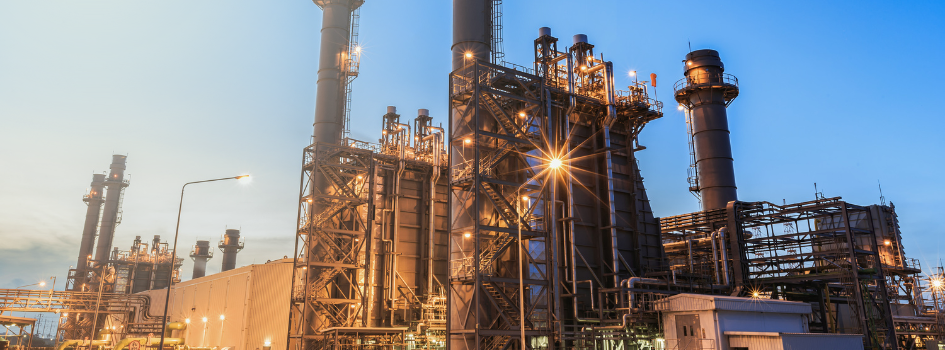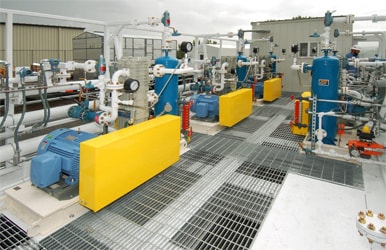Uncategorized
What is the Purpose of a Vapor Recovery Unit (VRU)?
December 16, 2024 Welcome

What is a vapor recovery unit? A VRU captures and recovers vapors released during industrial processes, especially in oil and gas. By recovering these vapors, VRUs help industries meet environmental regulations, reduce emissions, and capture valuable hydrocarbons that would otherwise be lost.
The Core Purpose of a Vapor Recovery System
The main purpose of a VRU is to capture vapors — typically volatile organic compounds (VOCs) — that are emitted from liquid storage tanks or during processes involving volatile substances. These vapors can include methane, propane, butane, and other hydrocarbons that, when released, contribute to greenhouse gas emissions and can have a harmful impact on the environment and human health.
The VRU helps minimize these emissions by capturing and repurposing the vapors, allowing companies to adhere to stringent environmental regulations and improve operational efficiency.
How Vapor Recovery Units Work
VRUs function by capturing vapors and then compressing them into a liquid form that can be stored, reused, or sold. The process involves several steps:
- Step 1 — Vapor Collection: Vapors are collected from storage tanks or processing equipment. VRUs often use suction lines to pull vapors directly from the source.
- Step 2 — Compression: The collected vapors are compressed to increase their pressure. This step is essential for condensing the vapors in later stages and ensures efficient vapor recovery.
- Step 3 — Condensation and Cooling: Once pressurized, the vapor is passed through a cooling system, often using a heat exchanger, to condense the vapors into liquid form. This step separates the hydrocarbon components from other gases.
- Step 4 — Separation: The condensed hydrocarbons and any non-condensable gases are then separated. Hydrocarbons flow to a storage container, while the non-condensable gases are either released or processed further.
- Step 5 — Optional Adsorption: In some setups, the remaining vapor can pass through an adsorption system (e.g., activated carbon) to capture any residual hydrocarbons. This step ensures minimal loss of valuable gases and reduces emissions.
- Step 6 — Storage or Reuse: The recovered hydrocarbons are stored for future use or sale, turning what would have been waste into a reusable resource.
The Value a Vapor Recovery System Brings to Your Process
By investing in a VRU, companies not only adhere to regulatory standards but also improve workplace safety, capture valuable resources, and contribute to environmental sustainability.

Environmental Compliance
VRUs help industries comply with regulations aimed at limiting emissions. Regulatory bodies, such as the U.S. Environmental Protection Agency (EPA), set strict limits on the amount of VOCs and other pollutants companies can release. Installing a VRU ensures companies stay within these limits.
Cost Savings and Revenue Generation
The hydrocarbons recovered by a VRU can be reused as fuel or sold, providing a source of revenue and reducing fuel costs. The captured vapors are valuable commodities that would otherwise be wasted, turning what would be an environmental liability into an economic asset.
Safer Operations
By capturing VOCs and other flammable vapors, VRUs reduce the risk of explosions, fires, and hazardous vapor buildup around storage tanks and processing units. This safety enhancement is critical for facilities where high concentrations of volatile compounds could create dangerous working conditions.
Reduction in Greenhouse Gases
VRUs contribute to reducing emissions by capturing and reusing methane, a potent greenhouse gas. This reduction is crucial for industries looking to lower their environmental impact.
More Efficient Processes
The capture of valuable hydrocarbons means less loss of raw materials, leading to better overall process efficiency. VRUs can improve product yield, minimize waste, and enhance the consistency of operations. With a VRU, companies experience fewer disruptions related to vapor emissions, allowing production and storage processes to run more smoothly.
In the long term, improved operational efficiency means more reliable output, reduced downtime, and a stronger bottom line.
Applications of Vapor Recovery Units in Different Industries
While vapor recovery systems are most commonly used in oil and gas operations, they also have significant applications in other industries that handle volatile organic compounds, including:
- Petrochemical plants: VRUs capture hydrocarbons during the storage and transfer of petrochemicals.
- Food and beverage: Some VRUs are used in fermentation processes, where they capture vapors released during alcohol fermentation and other similar processes. These captured vapors can sometimes be reused, making VRUs an effective tool for reducing emissions and maximizing resource recovery in beverage production and other fermentation-based applications.
- Pharmaceuticals: In pharmaceutical manufacturing, VRUs help recover solvents and other volatile compounds used in the production process.
- Chemical manufacturing: In chemical plants, VRUs capture vapors released during storage, mixing, and blending processes. This recovery process prevents the release of harmful emissions, preserves product integrity, and helps the facility meet strict environmental standards. They are especially important in facilities handling hazardous or high-value chemicals, as they ensure both safety and economic efficiency.
Optimize Your Operations with IFS/DXP
Partner with IFS/DXP to customize your process solutions. Our modular process skids and systems are designed to meet the specific needs of your operation, improving efficiency, safety, and compliance. Reach out today to discuss how our innovative solutions can drive your project forward.
